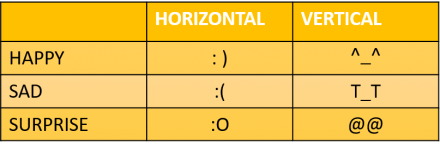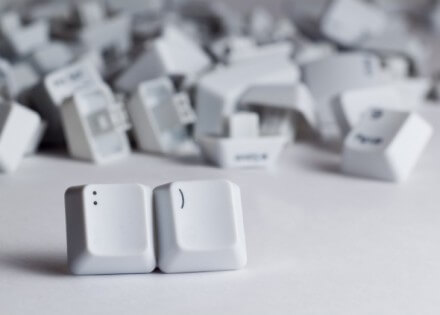Emoticons play a huge role in text-based communications today. Just as facial expressions give non-verbal cues when we communicate in-person, emoticons provide context when we text, chat, email and post in online forums. The original two emoticons are widely credited to Scott Fahlman, a computer scientist at Carnegie Mellon University, who back in 1982 posted a smile : ) and a frown : ( in one of the university’s online bulletin boards as a tool to help his peers and professors distinguish between serious posts and jokes. A decade later, writer Neal Stephenson described emoticons as “the electronic equivalent of spin doctors” (Smiley’s People, 1993) and today there are more than 15,000 different emoticons to choose from, though most remain variations of Fahlman’s original two. The plethora of facial expressions and emotional states represented in modern emoticons are meant to help us understand each other better. But do emoticons get lost in translation across geographic and cultural lines? The short answer is yes.
Horizontal and Vertical Emoticons
Did you know that there are two styles of emoticons? Scott Fahlman posted his original smileys in the horizontal style (i.e. sideways), which often appears more natural to westerners who are used to reading and writing horizontally (e.g. English is read left to right, as are its emoticons). Vertical emoticons are more popular in East Asian countries and are meant to be viewed from top to bottom (i.e. eyes are pictured above the mouth).

In East Asian countries where vertical writing is commonly practiced, individuals may have trouble initially recognizing the faces in horizontal emoticons and some have found a tilt of the head (left ear to shoulder) helpful to see the sideways pictures. The same difficulty applies to Westerners attempting to discern vertical emoticons.
It is important to note that the Eastern/Western divide is not always on point. Studies have shown that a country’s spoken language actually has a higher impact in determining emoticon style than geography. For example, despite being located in the East, Twitter users in the Philippines and Indonesia tend to use horizontal emoticons because English is so commonly spoken there.
Eyes vs. Mouth
The main contextual difference between horizontal and vertical emoticons lies in which part of the face carries the meaning. The horizontal style emphasizes mouth shape for expressing emotion, commonly relying on the inexpressive colon sign for eyes. In contrast, the vertical emoticon style emphasizes eye shape for expressing emotion and commonly uses the flat underscore character for the mouth (or even leaves out the mouth entirely).
Masaki Yuki, a behavioral scientist at Hokkaido University in Japan, released a study in 2007 titled “Are the windows to the soul the same in the East and West?” In it, he investigates how cultural background influences the way people use facial expressions to show emotion. Americans, he says, are used to a culture of independence, emotional openness and overt self-expression. Since the mouth is the most expressive part of the face, smiling plays a huge role in daily American interactions. Politeness is often defined by the presence of a smile (regardless of whether or not it is genuine). In shops and restaurants, a bigger smile can translate into a bigger tip for workers and a more pleasant experience for the customer.
By contrast, people in East Asian countries like Japan, China and Korea tend to value humility and are far more “collectivistic and interdependent.” In these eastern cultures Yuki says, “It is more important for emotional expressions to be controlled and subdued, and a relative absence of affect is considered crucial for maintaining harmonious relationships.” Therefore, a typical smile or frown of the mouth is rare in a country like Japan. Instead, the people of eastern cultures look for emotional cues in the eyes (which are much more difficult to control than the mouth).
Localize for Your Audience
This cultural difference is the reason we have two styles of emoticons today. Vertical emoticons help easterners focus attention on the eyes, just as they do in real life and horizontal emoticons do just the opposite. It’s crucial to keep these cultural differences in mind when you localize materials for East Asian readers (and vice versa). It’s not just the words that must be translated and contextualized, but emoticons too.
The Author
 Sirena Rubinoff is the Content Manager at Morningside Translations. She earned her B.A. and Master’s Degree from the Medill School of Journalism at Northwestern. After completing her graduate degree, Sirena won an international fellowship as a Rotary Cultural Ambassador to Jerusalem. Sirena covers topics related to software and website localization, global business solutions, and the translation industry as a whole.
Sirena Rubinoff is the Content Manager at Morningside Translations. She earned her B.A. and Master’s Degree from the Medill School of Journalism at Northwestern. After completing her graduate degree, Sirena won an international fellowship as a Rotary Cultural Ambassador to Jerusalem. Sirena covers topics related to software and website localization, global business solutions, and the translation industry as a whole.


